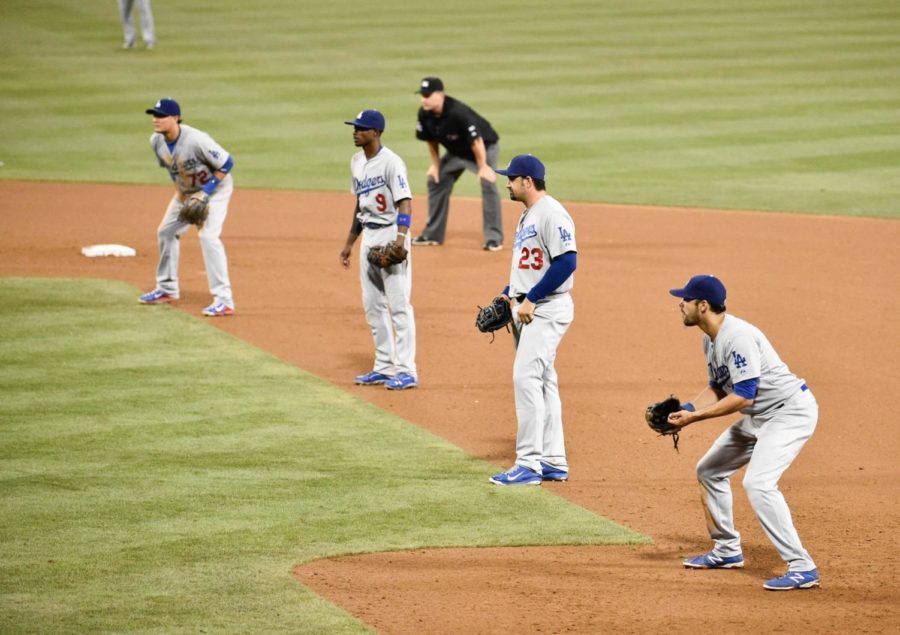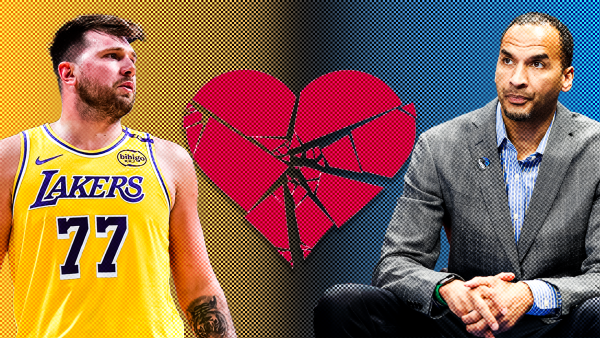Big Changes in Baseball
MLB has approved rules changes coming in the 2023 season
Example of a shift that will be banned next year.
On Sept. 9th, the Major League Baseball (MLB) competition committee, consisting of players and higher management, came together to pass some significant rule changes coming next MLB season. Many players and fans still question whether these changes are good for the game and if, just as MLB commissioner Rob Manfred claims, the changes are “giving fans the kind of game they want to see.” This is also coming after the heated debates in the ninety-day lockdown during the offseason between the players association and league officials. Seeing how eager the league is to implement these rules, the question remains, are these changes good for baseball?
To understand their validity, we first must understand what purpose the rules intend to serve. For starters, a new pitch clock will be implemented to shorten the time it takes between pitches. The clock will give pitchers 15 seconds with no runners on base and 20 seconds with runners on base to begin their motion to pitch the ball. If the pitcher hasn’t begun pitching the ball by the time the clock runs out, he will be given an automatic ball. This also applies to the batter, where if they delay entering the batter’s box, they will be given an automatic strike. The pitch clock strives to shorten the amount of time during games, which league officials hope to keep younger audiences engaged, and has already seen improvements. According to ESPN writer Jesse Rogers, the 2022 MLB season, which is played with no pitch clock, has finished games in an average of three hours and four minutes, while the minor leagues with the implemented pitch clock, ended consistently around two hours and thirty minutes.
Next up is an increase in base size and texture. MLB bases will increase from fifteen square inches to eighteen and the texture of the bases will change. This was done to try to increase player safety, as many players have been injured due to sliding or slipping on top of the bases. According to the MLB, the larger bases have reduced injuries caused by bases by 13.5% in the minors. Also, the change in bases was done to shorten the distance between bases, cutting it down by 4.5 inches, which the league hopes will increase stealing bases. To encourage this further, MLB will also limit the number of times a pitcher can step off the mound. Stepping off the mound is typically used as a “pick-off move” to control runners stealing and force them to get a shorter lead-off. Next season, pitchers can only step off the mound twice per at-bat. If this rule is violated, the pitcher will be charged with a balk, which allows any runners on base to advance one base with no pitch thrown.
Lastly, the most controversial opinion is the banning of the shift. The shift is the strategy of moving or shifting your players to one side of the field based on the batter’s tendency to hit the ball in a certain direction. This allows teams to turn balls that would result in hits into routine groundouts in the shift. MLB officials see this creating a lack of action as the average player batting average is at its lowest since 1968. Banning the shift will not only allow more hits, but the league hopes it will contribute to more exciting diving plays in the infield.
In terms of how the changes will affect the game, I think there is more bad than good. As far as the larger bases go, I think they are a positive addition. Former MVP Bryce Harper got injured because the base was too small and slick causing him to tear his ACL when stepping on top of the base. Allowing the base size to increase will decrease injuries like these from occurring. The effect of increased stealing will also make the game more fast-paced and more entertaining.
However, the pitch clock and shift will be harmful to the growth of baseball. The pitch clock will hurt the game as pitchers need time to think. Baseball is a slow-paced, mental game, and since the game will speed it up, the pitcher’s pacing may be thrown off. Since the game is supposed to be faster, I also believe it will make the game sloppier as infielders have less time to refocus and settle down. While the shift gives hitters an advantage, I think it’s taking away the strategy in the game. Baseball has always been a strategic game, and banning the shift restricts the tactics teams can take defensively. Ultimately, baseball will have a very different feel when these changes are implemented. Not until we see them in action will we know if these changes are for better or worse.







Javoris Bohannon sr • Nov 8, 2022 at 8:48 pm
Great job on your article son.thank your teacher for inspiring u to write.